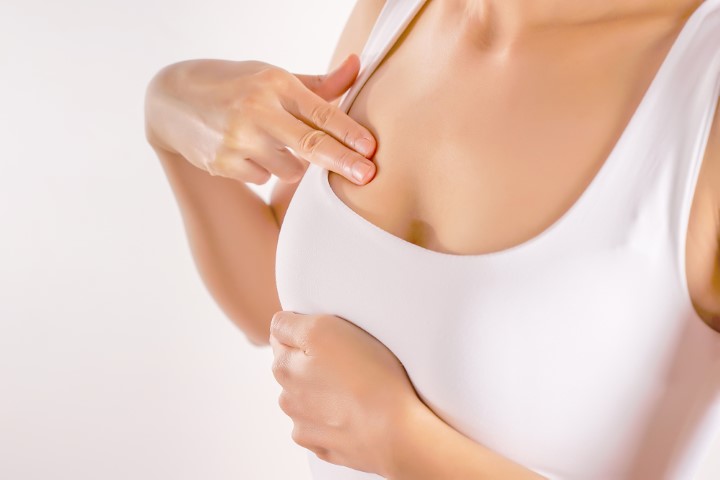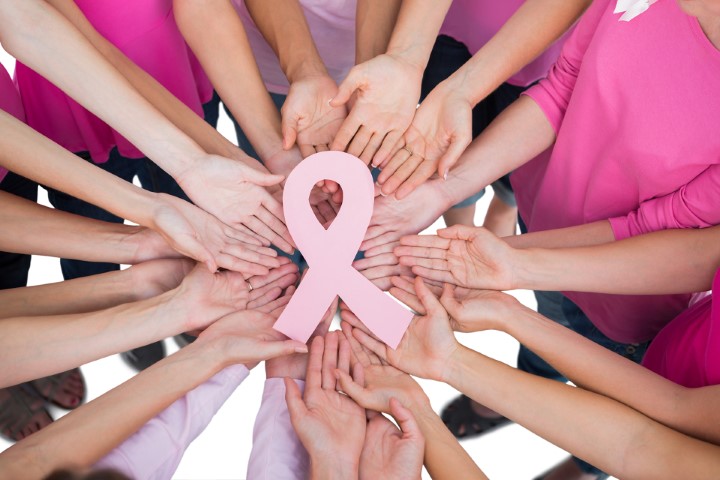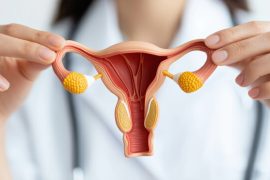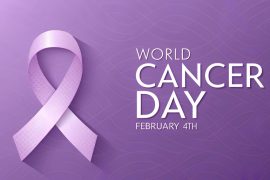Cancer can start anywhere in the body. They are a group of large cells that invades the organ or tissue and start growing aggressively if not controlled in time can lead to spreading to other parts of the body. Cancer is the second leading cause of death globally, accounting for an estimated 9.6 million deaths, or one in six deaths, in 2018.
Breast cancer is cancer that develops in the cells of the breast. Lobules are the glands that produce milk and ducts are the pathways that bring the milk from the glands of the nipples. The cancer cells are generally formed in these glands but they can also form in the fatty tissue or the connective tissue within your breast.
The lymph nodes are the general pathway that helps the cancer cells spread to the rest of the body parts. The unchecked cancer cells invade their way to healthy cells then can travel through lymph nodes under the arms.
Breast cancer cells can develop in both males and females, but it is most commonly diagnosed in females. It is the most common type of cancer. As per the American Society of clinical oncology 1 in 29 females develop breast cancer in India.
Breast Cancer Symptoms
In the early stages, it is difficult to detect breast cancer as it may not have any clear symptoms, sometimes the lump could be small making it hard to know. However, a mammogram could detect any abnormality.
The first symptom would a lump under your arms or on your breast that was not there before.
Other symptoms of Breast cancer are:
- Pain in the breast
- Rash around the nipples
- Inverted nipples
- Bloody discharge from the nipples
- Redness and pit around the breasts
- Change in the size and shape of the breast
- Any change of appearance of the skin on the breast or nipples
All lumps are not cancerous it could also be a benign cyst but if there is any lump or other symptoms it is ideal to visit a doctor to exam further.
Key steps to prevent developing Breast Cancer in the future.
There is no way one could prevent breast cancer. But certain lifestyle decisions in one’s life can decrease the risk of breast cancer.
- Be active and maintain a healthy weight
It is necessary to have a healthy weight to prevent cancer. Hormone receptors can cause breast cancer cells to grow and develop. An increase in Hormone receptors can be caused due to excess fat in the body.
If you have a healthy weight maintaining it is very important as it decreases the chances of developing breast cancer. If you have an unhealthy try to get it under control through your diet. Adults should aim for at least 150 minutes a week of moderate activity.
- Avoid alcohol and smoking
There are pieces of evidence that show a strong link between smoking and breast cancer. Smoking is unhealthy and is linked to several cancers including lung cancer. Based on research it is advised to take not more than one glass of alcohol per day as having alcohol at a small amount still puts one at risk.
The more you drink or smoke the higher the chance of developing breast cancer.
- Regular visits to gynecologists and mammograms
It is ideal for women above the age of 40 to visit a gynecologist for an annual mammogram. Mammograms are effective to detect any abnormality and catching signs of cancer. Additional to regular visits and annual mammograms women should also self-examine their breasts as it will help to notice any changes in size and shape. Regular mammograms would not prevent cancer but help it detect at an early stage. If you detect any breast cancer symptoms it is important to communicate them to a doctor.



- Hereditary Factor.
Few women are at a higher risk of developing breast cancer due to hereditary factors. If a close relative in one’s family has or had breast cancer then the person’s chance increase. Women who carry certain mutations in the BRCA1 and BRCA2 genes are genes that produce a protein that repairs damaged DNA. Everyone has two copies of this gene that we inherit from our parents. They are also called tumor suppressor genes as they have certain changes that are harmful (pathogenic) variants (mutation) that can also have a higher chance of developing it. You may need to do a DNA test and to diagnose this mutation.
- Limitation in hormonal therapy
Discuss with your doctor the risks and benefits of hormonal therapy if you are taking it for menopause and chronic diseases. Combination hormonal therapy may put people at higher risk. That is why it is important to study and talk to your doctor regarding alternative medication and treatment. If at all there is no substitute then consult your doctor and limit the dosage of medication.
Breast Cancer Treatment
Breast cancer treatment includes:
- Surgery
There are two types of surgery depending on the size of the tumor.
- Lumpectomy- The tumor and small amount of healthy tissue around the tumor along with tissues under your arms are removed.
- Mastectomy- The surgical removal of the entire breast.
- Chemotherapy
Chemotherapy is drugs used to destroy the cancer cells keeping the cancer cells from growing and multiplying.
It can be suggested to be given before surgery if the tumor is larger. As it will help it to shrink a bit making surgery go easier.
May also be given after surgery to reduce the risk of recurrence.
- Radiation
The use of high x-ray particles to destroy cancer cells.
After lumpectomy radiation therapy is advised 3-4 times per week that is if the cancer cells have not spread to lymph nodes.
After a mastectomy, it is usually given 5 days a week.
The length of your radiation therapy depends upon the tumor and spread of cancer cells.
Following few steps and adding them to your lifestyle could be lifesaving. Be vigilant regarding any changes that are unusual and consult your doctor.




